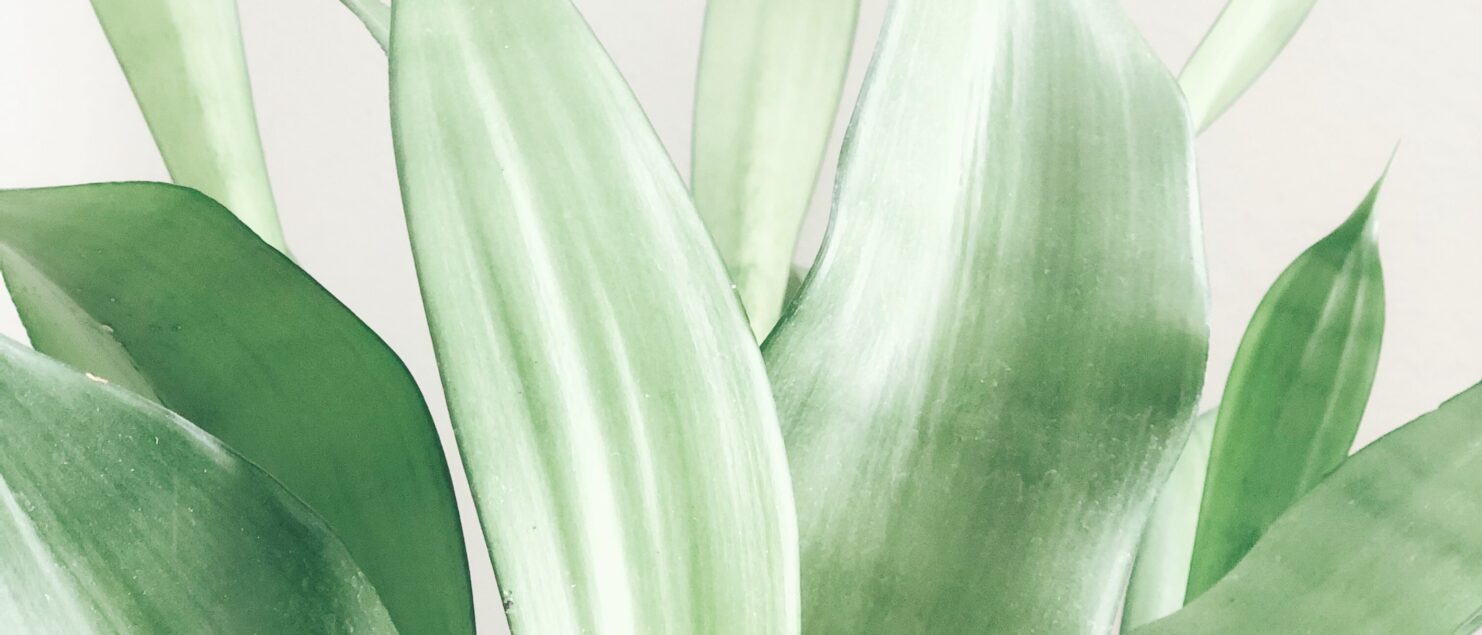Common Houseplant Pests & How To Get Rid of Them
Have you been caring for your plants exactly as instructed and they STILL die before your eyes? It might not be you; it could be little houseplant pests munching on your precious plants.
All these guys are most likely chomping down on roots and leaves, leaving your defenseless plants fighting for their lives.
You’ll find them lurking on leaves and stems or trudging through the soil. Often, they’re so tiny you need razor-sharp eyesight to identify what they are.
I’ve had plants start dying without changing a thing in the way I was caring for them. Come to find out, my plants were infested with…
Bugs!
There are a number of reasons why they might be in there or how they got there in the first place, but the good news is that houseplant pests are completely manageable.
Here are some of the most common houseplant pests I’ve encountered and how to get rid of them:
Mealybugs
These aptly named pests will surely make a meal out of your plants if you give them half a chance.
They love to hide on the underneath of leaves or on bottom of stored fruits.

Mealybugs are soft-bodied mite-looking parasites that appear off-white/pinkish in color. They feed on plant juices and saps, which often means you’ll find them occupying more subtropical plants like cacti or fruit trees.
Mealybugs leave heavy white powdery webbing behind on plants as they spread, so if you see this residue, it’s a telltale sign that they’re present.
In my personal experience, I’ve had to battle a case of mealybugs on my fiddle leaf fig.
I accidentally introduced mealybugs into my house by bringing home a prickly pear stem. The plan was to re-grow it into a full plant, but instead I started a war between my plants and these pests.
Spoiler: The prickly pear stem didn’t survive the fight.
“Great job, Amanda!”
The piece of cactus didn’t show any signs of mealybugs when I first got it, but they were there. I eventually noticed that the piece of prickly pear was getting that same webbing the mother plant had and threw it away ASAP.
Unfortunately, it was too little, too late. My fiddle leaf fig got them. The cactus stored on a windowsill near the fiddle leaf fig got them…
How To Get Rid of Mealybugs:
I read online that dish detergent and isopropyl alcohol mixed together can treat them. After trying those treatments with no success, I realized that the approach would only work for mild to moderate cases of mealybug infestation, and as I said, I was dealing with an all-out war.
After hours of research and some trial and error, I finally figured out how to get rid of them once and for all! To this day, both plants are thriving and living mealybug-free.
Ultimately, what got rid of them for good was a combination of neem oil and insect killing soap.
- Isolate the plant away from any other plants and direct sunlight. Try to keep these treatments to either early morning to evening/night.
- Spray a combination of water and the insect killing soap (following the manufacturer’s instructions) onto the whole plant, basically drenching it. I sprayed it in every nook and cranny until it was dripping all over the floor (you can put down a towel under where you’re spraying for easy clean up). Mealybugs are very tricky and can hide from your treatment, so make sure you’re covering every inch.
- The next day, put neem oil on a rag and wipe the leaves thoroughly – especially the underside of the leaves or wherever you see webbing.
- Wait a few days and inspect. Continue to repeat these steps until you’ve killed them all.
Not only did the neem oil take out these houseplant pests, but it also made them very shiny and radiant.
Both the neem oil and the insect killing soap were organic options with the main ingredients being fatty acids – a great insecticide.
Spider Mites
Any one with arachnophobia like me will shutter at the name SPIDER mite. But don’t get too worked up – these guys are teeny tiny and aren’t harmful to humans at all. They’re reddish/yellow in color and only grow to about the size of a pinhead.

These little suckers are just as difficult to get rid of as the mealybug. They’re borderline microscopic and they spin webs just like other spiders do.
Just like the mealybugs, spider mites live on the underside of leaves and on stems and always appear to have a powdery substance on them.
They love to eat leaves and can often cause damage such as puncture holes. It’s important that you treat them quickly if found.
I had only one go-round with spider mites and it wasn’t pretty. They came back almost 3 different times.
Mine stemmed from a medallion prayer plant I got from a big box home improvement store.
I saw this plant tucked away on a shelf inside the store, begging to be nurtured back to life, and I thought I’d be up for the challenge. It was about 3 weeks before I noticed a decline in the plants health (even after putting in all that effort to nurture it back).
That’s when I noticed spider webbing and little bugs under the leaves.
How To Get Rid of Spider Mites:
I treated for the spider mites just as I treated for mealybugs: with a combination of neem oil and the insect killing soap.
But even with such a powerful combination, the spider mites kept returning. What was I supposed to do?
So I went to the Internet in search of a new solution and the only one I could find was one that required clipping the infected leaves and discarding them. Sadly, in this case, that was most of the plant.
I cut off all the leaves and left about an inch of the stem. Every week when I water, I still spray it with a little of insect killing soap. My medallion prayer plant is now free of spider mites and growing back its leaves.
That’s not to say you CAN’T kill spider mites with some kind of solution, especially when they’re caught early. By the time I realized I had spider mites on my plant, I had no other options that to trim it and start fresh. It’s what others had done.
I’m just glad I can start fresh with the houseplant pests gone.
Fungus Gnats
Have you been over watering your plants? Be honest.
?♀️
Well, then you’ve probably run into the fungus gnat at one point or another.
The thought of a gnat eating the rotting root hairs and moldy leaves off a once healthy plant just feels like plant abuse. I mean, isn’t that plant having a hard of enough time as it is!

Fungus gnats live in fungus-filled planters and lay eggs in moist soil.
They can also live in the drains of your home. Although the fungus gnat doesn’t kill plants or harm humans, they’re just plain ANNOYING.
They will fly all over your house and be that little, high-pitched buzz in your ear while you’re reading plant blogs.
How To Get Rid of Fungus Gnats:
I had a few planters with poor drainage holes and those plants suffered from moldy soil and root rot as a result of it. Poor drainage will kill your plants and fill your home with these pests if not properly taken care of.
- Identify which planters might have mold growing on soil. Plants experiencing root rot might have black appearance around the base of their stems.
- For plants with obvious fungus gnats and mold, you can once again use insect killing soap and neem oil! Thoroughly spray the soil about once a week until they’re gone.
- Mixing some diatomaceous earth into the top layer of the soil will also help treat the issue.
- If you don’t have access to either, simply letting the soil dry out for a few weeks is another solution, though it can take a bit longer and may not be great for your plants that are susceptible to drought.
Other Houseplant Pests
This list is made up of just a few of the buggers that I’ve had to deal with so far, but there are plenty of other pests out there, and they can come from anywhere.
If you get any kind of new plant, make sure you isolate it for up to 3-4 weeks before you bring it near the rest of your collection. There’s nothing worse that treating several plants at once – trust me.
Just know that if you get any of these common houseplant pests, they are treatable. As you can see, powerful, organic insecticides like neem oil and insect killing soaps can be a huge benefit in the fight – so it’s help to keep some on hand at all times.
Have you experienced any of these pests?
Want More Like This?
Join my email list to get the latest tips & tricks for home plant design and care!

